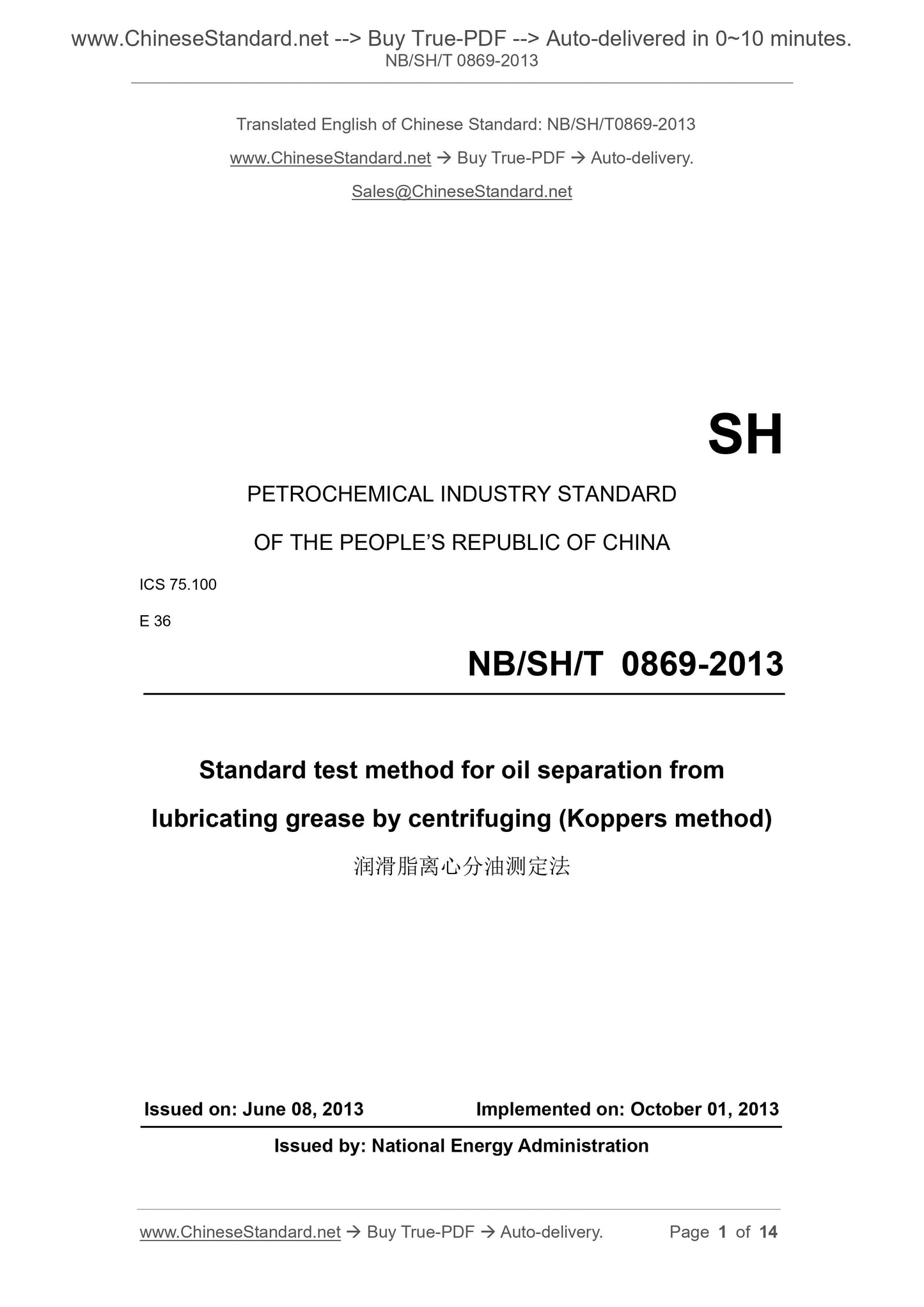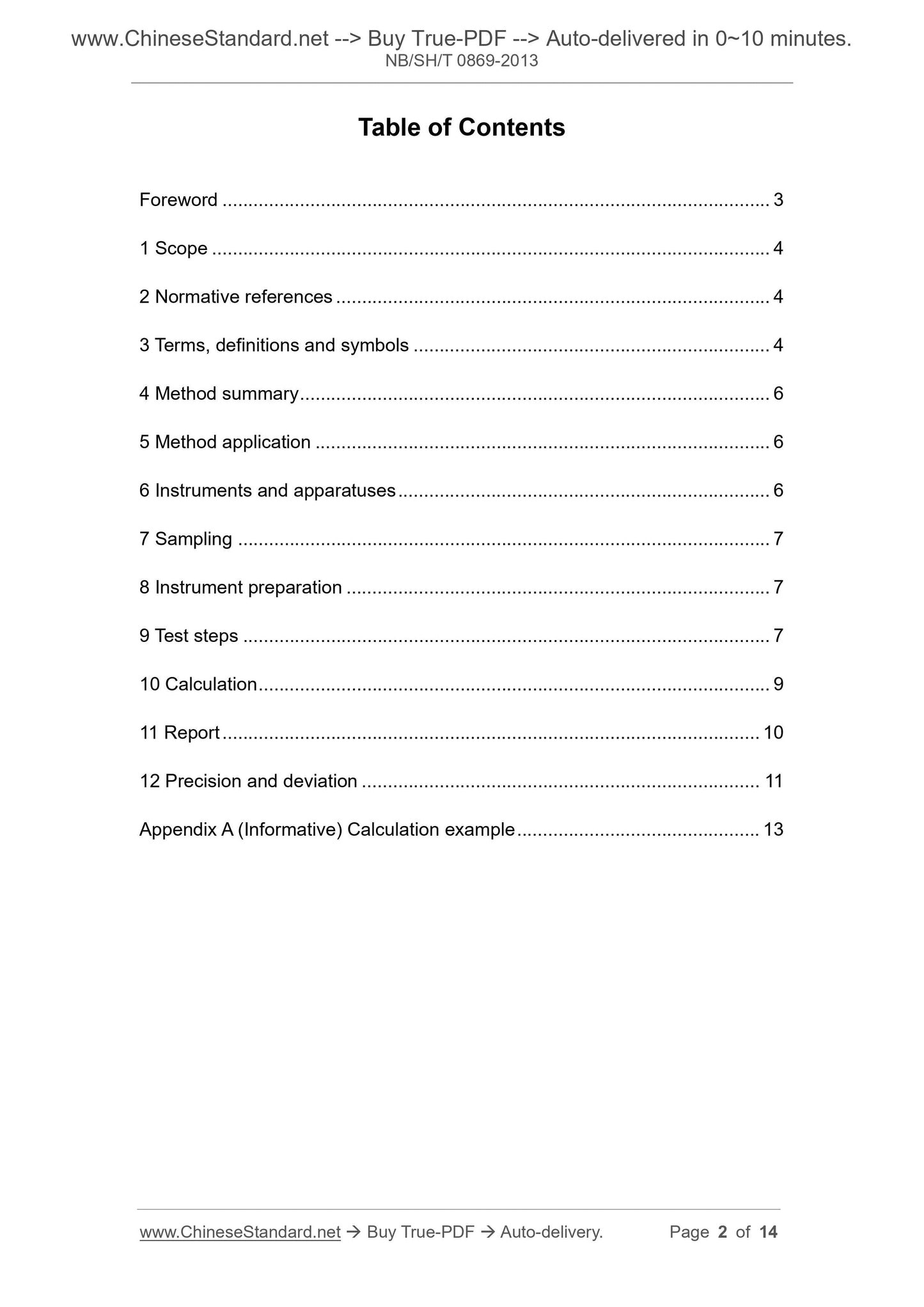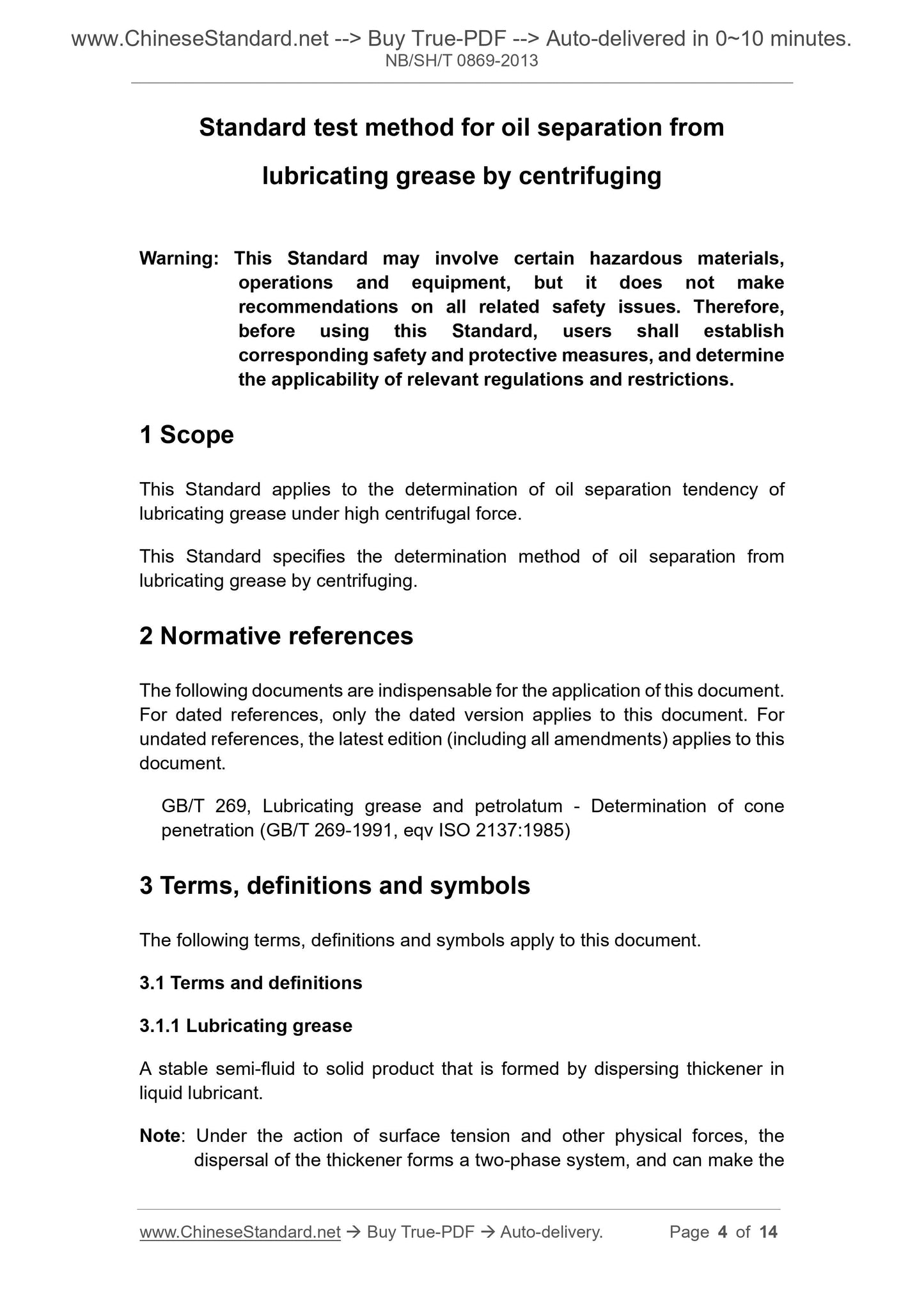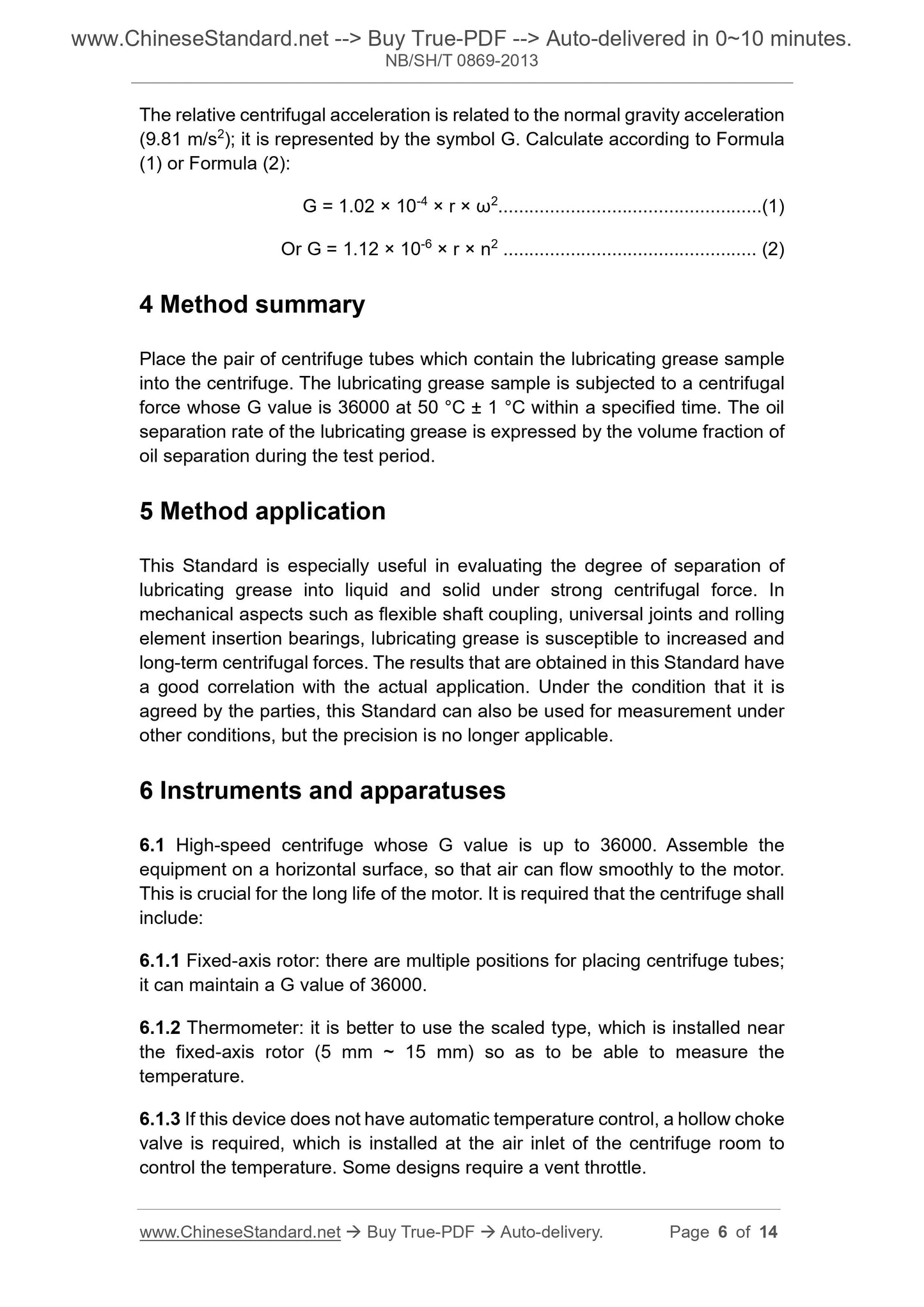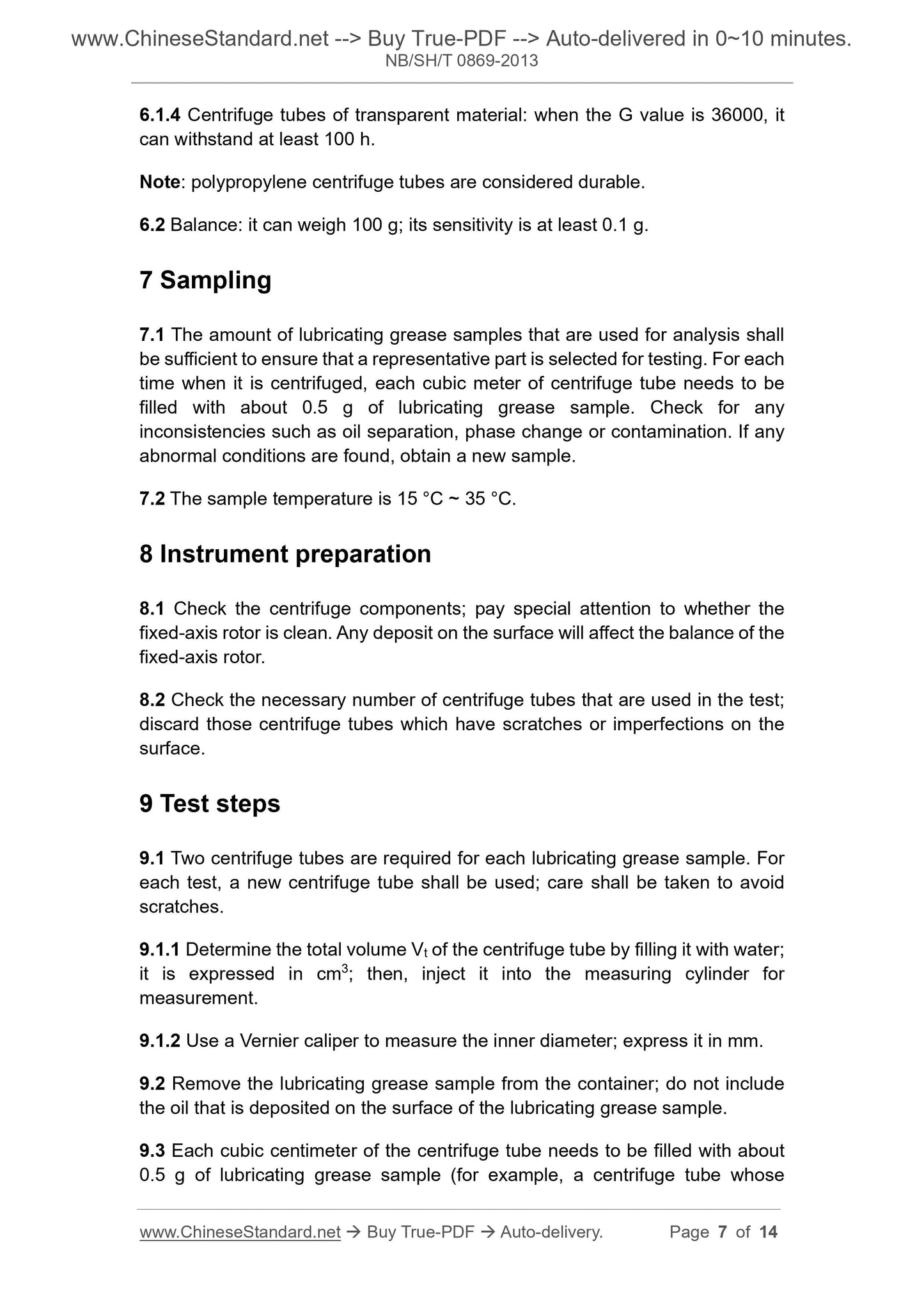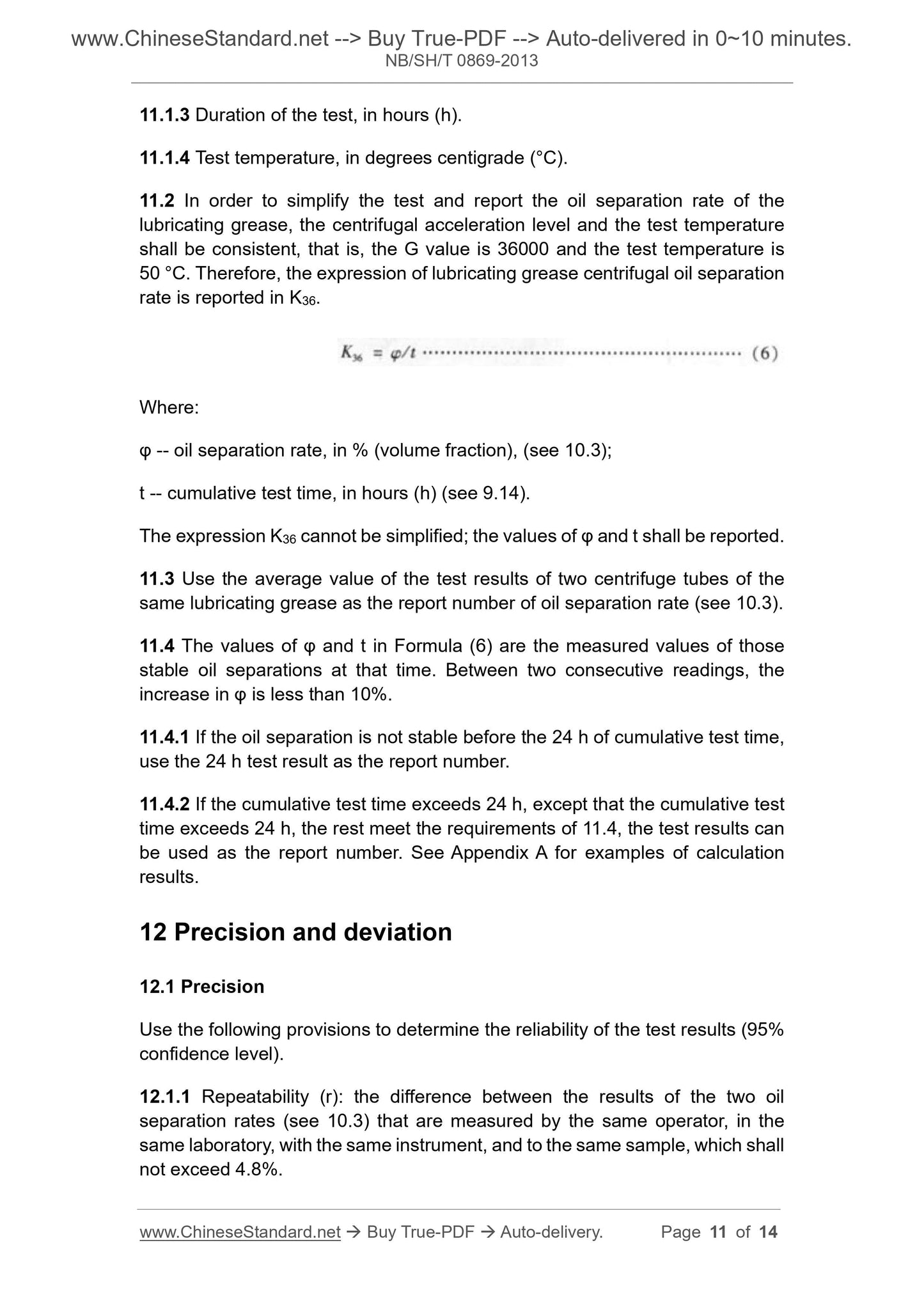1
/
of
6
www.ChineseStandard.us -- Field Test Asia Pte. Ltd.
NB/SH/T 0869-2013 English PDF (NB/SH/T0869-2013)
NB/SH/T 0869-2013 English PDF (NB/SH/T0869-2013)
Regular price
$190.00
Regular price
Sale price
$190.00
Unit price
/
per
Shipping calculated at checkout.
Couldn't load pickup availability
NB/SH/T 0869-2013: Standard test method for oil separation from lubricating grease by centrifuging(Koppers method)
Delivery: 9 seconds. Download (and Email) true-PDF + Invoice.Get Quotation: Click NB/SH/T 0869-2013 (Self-service in 1-minute)
Newer / historical versions: NB/SH/T 0869-2013
Preview True-PDF
Scope
This Standard applies to the determination of oil separation tendency oflubricating grease under high centrifugal force.
This Standard specifies the determination method of oil separation from
lubricating grease by centrifuging.
Basic Data
| Standard ID | NB/SH/T 0869-2013 (NB/SH/T0869-2013) |
| Description (Translated English) | Standard test method for oil separation from lubricating grease by centrifuging(Koppers method) |
| Sector / Industry | Energy Industry Standard (Recommended) |
| Classification of Chinese Standard | E36 |
| Classification of International Standard | 75.100 |
| Word Count Estimation | 9,963 |
| Quoted Standard | GB/T 269 |
| Adopted Standard | ASTM D4425-2009, MOD |
| Regulation (derived from) | National Energy Board Notice 2013 No. 4; industry standard for filing Notice 2013 No. 9 (No. 165 overall) |
| Issuing agency(ies) | National Energy Administration |
| Summary | This standard applies to: Determination of grease under high centrifugal forces oil tendencies. This standard specifies the grease centrifugal oil separator measurement methods. |
Share
